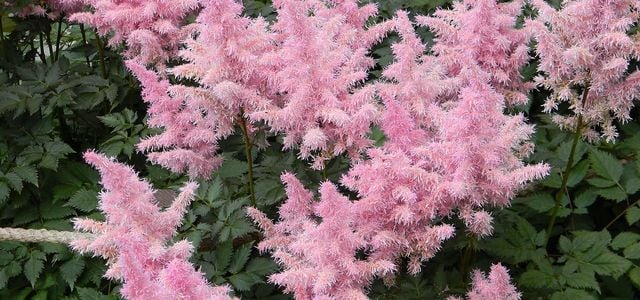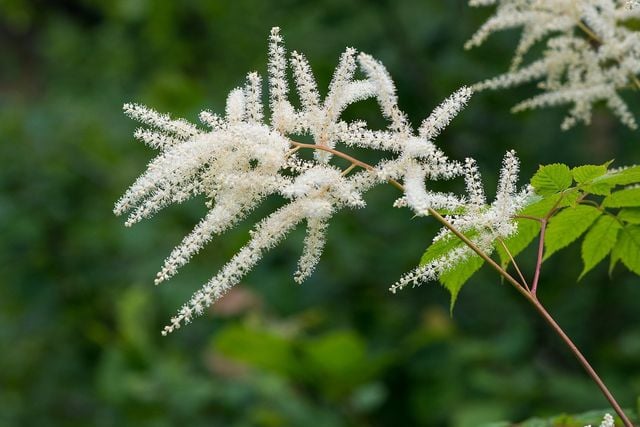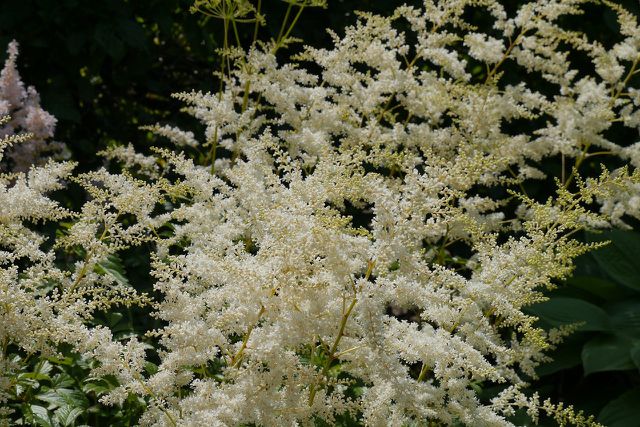
Astilbes are colorful and hardy garden perennials. All about cultivation and care of the exotic splendid aspen.
Astilbes: exotic shade plants
Astilbes, or showy pears, are among the most exuberant flowering plants in our native gardens. These perennials, which belong to the stonecrop family, originally came from East Asia, where they are still very popular today and adorn many parks and gardens, especially in Japan and Korea. Up to 50 different species are known worldwide.
Characteristic of astilbes are their noble, delicate flower panicles, which can shine in numerous colors.
A great bonus is that astilbes are wonderfully suited to shady locations. Even in corners with only a little sun, they produce gorgeous flower spikes. The plants are non-toxic, making them suitable for gardens with children or pets.
Contents
Cultivation of astilbe

As late bloomers, most astilbes bring color to your garden especially when other flowers are already starting to fade. When you plant astilbes, you provide colorful variety in the garden well into the fall. Note, however, that some varieties bloom earlier in the year. Autumn-flowering astilbes include the “garden astilbe” and “Chinese splendor” species.
Planting Astilbe:
You can plant young astilbes from spring through fall.
Growing from seed is possible, but very difficult. The seeds of the astilbe are almost microscopic. It is easier to get young plants from a garden center.
Dig a generous planting hole, as deep as possible, in the desired location in the garden. The larger the plants become, the more their roots move towards the surface of the soil.
If you are planting in containers, make sure that the pot is large and deep.
If you are planting more than one, make sure that the plants are at least 30 centimeters apart.
Location and soil
The magnificent perennials thrive particularly well in nutrient-rich and humus-rich soil.
Partial to full shade locations in the garden or spots around a garden pond are well suited. The exotic plants do not tolerate drought and must therefore be kept continuously moist.
Swampy areas are also suitable for cultivation.
In semi-shaded to sunny locations, you should water accordingly more often. If drought conditions persist for a long period of time, Prachtspiere will quickly die. Keep in mind, however, that a full-sun location is not in keeping with the plant’s woodsy origins, and it will not tolerate it for long.
In containers, astilbes will only thrive if you can provide them with a continuous water supply. Since the soil in pots dries out more quickly than in the open, you should water daily to every other day, especially in midsummer.
Astilbe care

Astilbes are perennial and hardy. With proper care, you will enjoy this magnificent plant for years.
Care for astilbes
At the beginning of the growing season, between April and May, you should strengthen the plant with organic fertilizer or compost.
Astilbes do not need pruning. However, no later than spring, you should cut off only the faded panicles.
Astilbes are very sensitive to calcareous water. Therefore, if possible, water them only with rainwater or decalcified water.
The astilbes need moisture – but avoid prolonged waterlogging in any case. This will cause the roots of the astilbe to rot and the plant to die.
Winter readying astilbes
In winter, you should generously cover the root area of free-standing astilbes with fir branches or leaves. This will protect the delicate roots from frost and the plant will sprout vigorously again the next year.
You can also leave the potted Prachtspiere outdoors. Cover the pot over the winter with a warming coconut mat and cover the roots.
Alternatively, you can leave potted plants in an unheated room over the winter. Don’t forget to water them regularly!
Tip: Astilbes can be used wonderfully for dry bouquets. Simply cut off the feathery inflorescences after the flowering period and hang them up to dry for a few days.









